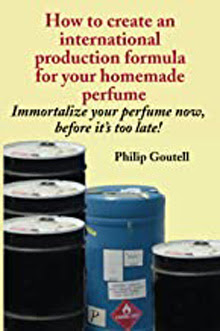Friday, April 21, 2017
Cleaning up a sour note
I was almost finished with the new fragrance. I had my formula worked out, ready to go into some final testing. But there was a problem. For one split second -- for less than a split second -- when I dipped a test blotter and smelled it, there was a momentary disconnect, a non-harmonious moment, before the fragrance settled down ("evolved") into what I intended it to be.
This non-harmonious moment was very short. Perhaps a split second. But it was jarring to my nose and put me on notice that something wasn't right. Should I ignore it (since it smoothed out so quickly!) or should I obsess with trying to discover what was causing that little problem and, hopefully, fix it?
If a perfumer tried to hand a perfume with this "problem" to Estee Lauder or Coty, he or she would be fired. Professional, full time perfumers know how to fix these issues before anyone calls the problem to their attention. I'm not that good. Still, I wanted very badly to fix this problem. Everything else about the fragrance had come together very nicely.
For me, correcting this problem, which just barely needed correction, meant trying to find exactly what was causing the problem and then making a small change that would leave everything else alone.
In this case I'm happy to say that I overcame that bad spot, that single sour note that was bothering me more than it might have bothered a person wearing this fragrance. It was an issue of balance. Too much of something (two somethings in this case) that had to be toned down to blend more perfectly with all the "something elses." While I may continue with a few small trials that will help me better understand what role each ingredient is playing in the formula, as for the "commercial" version, it's done.
So what comes next? The answer: some mathematics. I have to decided how much I want to produce -- perhaps no more than 12 bottles -- and then how much of each ingredient I'll need for that production.
Working backwards now, if I'm bottling just 12 bottles which each will take one ounce of fragrance (I already have bottles on hand), that's just 12 ounces of finished fragrance I'll need; the fragrance mixed with alcohol which, itself will be mixed with water.
Twelve ounces of finished fragrance is a pretty small amount so, as a practical matter, I'll make up a somewhat larger batch of the fragrance oil. That amount will still be small. But I want to go through the step that will allow me, should I decide to do this later, to "scale up" and produce any size batch I want, and even be able to have a professional lab create that larger batch for me, from my formula. Here are the details on how I will do this.
Subscribe to:
Post Comments (Atom)


No comments:
Post a Comment